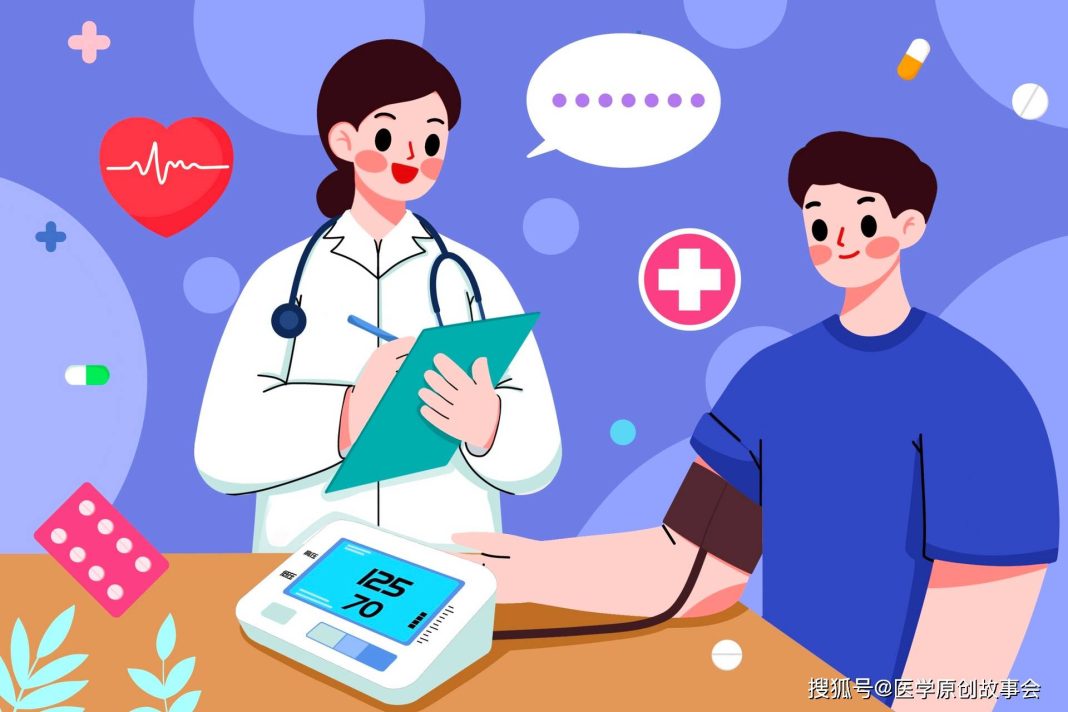Mr. Lü, 42 years old, noticed a strange phenomenon during his physical examination: his systolic blood pressure was normal, but his diastolic pressure was elevated. The nurse taking his blood pressure asked Mr. Lü if he had just come over without resting properly, and then allowed him to rest for half an hour before measuring again. The result was still a high diastolic pressure, while the systolic pressure remained normal.
In the following days, Mr. Lü went to the hospital again to test his blood pressure, and the results continued to show normal systolic pressure but elevated diastolic pressure. The doctor said that based on multiple measurements on different days showing an elevated diastolic value, he could be diagnosed with hypertension.
However, Mr. Lü could not understand. He asked the doctor, “You say I have hypertension, but why is my systolic pressure normal?”
The doctor explained that to determine whether someone has hypertension, only one value needs to be examined. Whether systolic or diastolic pressure is elevated beyond the normal range, as long as the values measured on different days are all elevated, it can be diagnosed as hypertension. It is not necessary for both to be elevated for a diagnosis to be made.
Although Mr. Lü’s systolic pressure was normal, his consistently high diastolic pressure allowed for a diagnosis of hypertension.
In fact, many people encounter similar situations where their systolic pressure, commonly referred to as high pressure, is normal, but the diastolic pressure, or low pressure, is elevated. What is going on?
First, young and middle-aged hypertension patients are more likely to exhibit a phenomenon where systolic pressure is low and diastolic pressure is high.
Many people may be diagnosed with hypertension at a relatively young age. Young and middle-aged individuals with hypertension often present with low systolic and high diastolic pressure.
Diastolic pressure is the pressure that occurs when the heart relaxes and the elastic rebound of the arteries occurs.
Since young and middle-aged individuals are relatively young, even if they are diagnosed with hypertension, they might not have or only have mild atherosclerosis. As a result, the elasticity of their blood vessels is generally good, leading to greater pressure generated during the elastic rebound and consequently higher diastolic pressure.
In contrast, elderly individuals experience a decline in blood vessel elasticity as they age. Therefore, elderly hypertension patients often manifest as having high systolic pressure while their diastolic pressure remains normal or even lower.
Second, unhealthy lifestyle habits are more likely to lead to elevated diastolic pressure.
Many young and middle-aged patients may suffer from hypertension at a young age. Why does this happen?
Shouldn’t hypertension be more common among elderly individuals? Why do young people also suffer from it?
The mechanisms behind hypertension are very complex, with genetics, age, and unhealthy lifestyle habits all playing critical roles. For many young individuals, elevated blood pressure is often due to unhealthy lifestyle practices.
If one starts smoking, drinking excessively, staying up late, and experiencing significant mental stress at a young age, these unhealthy habits can raise peripheral vascular resistance, leading to predominantly “high diastolic pressure” hypertension.
Third, should individuals with elevated diastolic pressure take antihypertensive medication?
In real life, people often focus especially on systolic pressure, or high pressure, while paying little attention to diastolic pressure, or low pressure. It is important to understand that both high and low pressures are critically important; an elevation in either can indicate hypertension.
The greatest danger of hypertension is its potential to affect the health of target organs, particularly the heart, brain, and kidneys, as hypertension can easily lead to atherosclerosis. Over time, this can provoke changes in these target organs.
Elevated diastolic pressure can particularly harm heart health, primarily because high diastolic pressure increases peripheral vascular resistance, causing the blood flow from the aorta to the peripheral blood vessels to slow down. Consequently, with more blood in the aorta, the pressure in the aorta rises during ventricular relaxation. If this condition remains uncontrolled for a long time, it may lead to compensatory hypertrophy of myocardial cells, resulting in hypertensive heart disease.
Therefore, it is crucial for patients with elevated diastolic pressure to receive scientific treatment.
The best treatment plan for hypertension is to change unhealthy lifestyle habits combined with antihypertensive medication. Changing unhealthy lifestyle habits includes quitting smoking and drinking, avoiding prolonged sitting, maintaining physical activity, adhering to a low-salt, low-fat diet, and developing regular sleeping patterns without staying up late.


